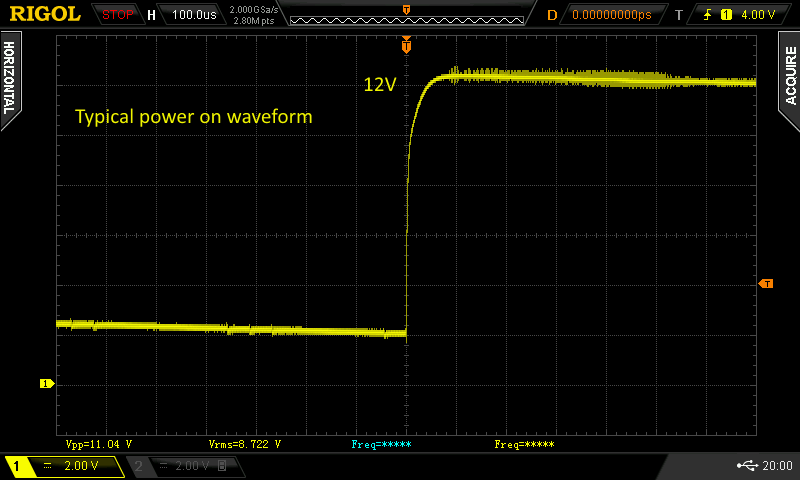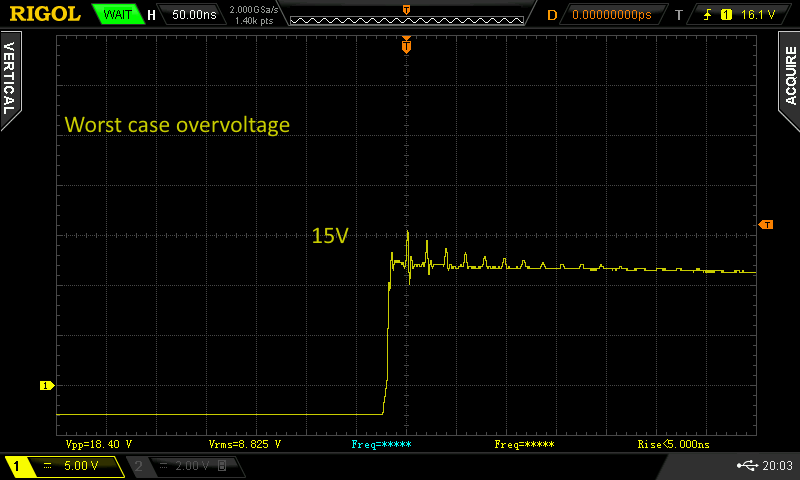I read some reports of input voltage spikes when using plugpacks and large ceramic input capacitors, with low ESR. In traditional designs an electrolytic is used with a higher ESR, and this spike is generally not an issue.
You can find the explanation in this TI paper,
"Applying a voltage step to the input capacitors through a long cable causes a large current surge that
stores energy in the power-lead inductances. The transfer of this energy to the capacitor produces a
voltage spike whose amplitude can be up to twice that of the original voltage step."
Input Filter Design for Portable Power Management System: http://e2e.ti.com/cfs-file/__key/communityserver-discussions-components-files/179/3487.Input-voltage-spike.pdf
I measured minimal overvoltage initially:

Rapidly unplugging and plugging was able to achieve a bit of ringing:

Worst case I was able to achieve the ~16V peak voltage above, 30% over expected. This is likely limited by the small plugpack (12V, 1A). Of course my input buck regulator is fine with this voltage (26V max), but, something to keep in mind with a sensitive circuit. To add an input TVS is not too expensive, and will protect against short and long term overvoltage (with a fuse).
 Thomas
Thomas
Discussions
Become a Hackaday.io Member
Create an account to leave a comment. Already have an account? Log In.